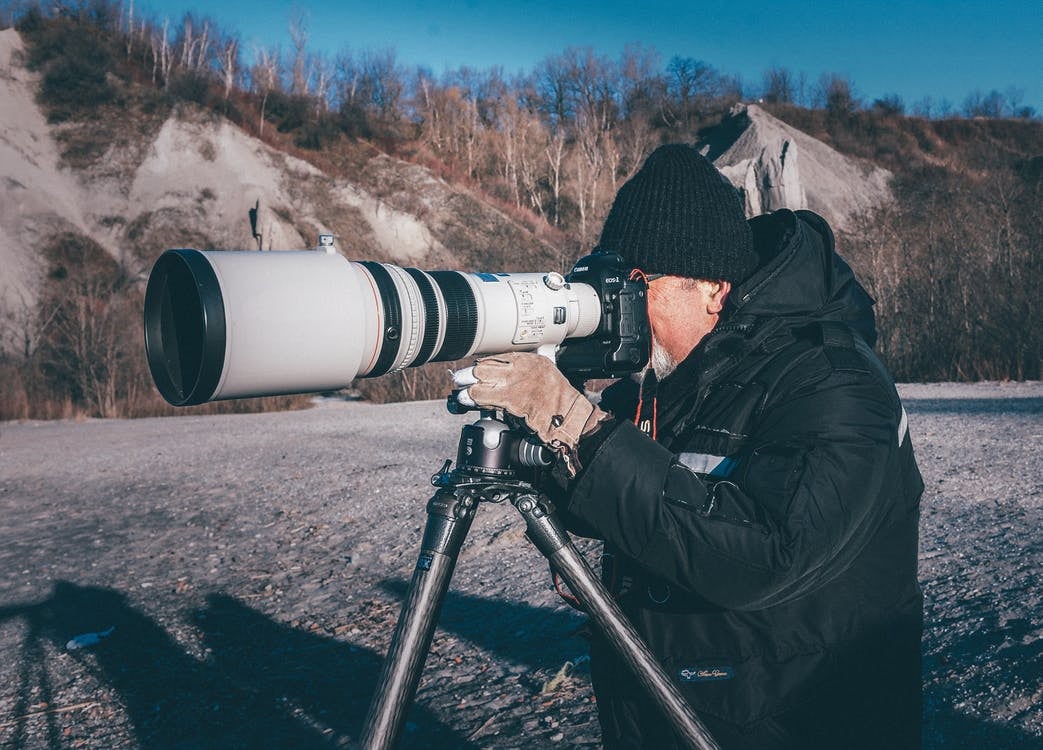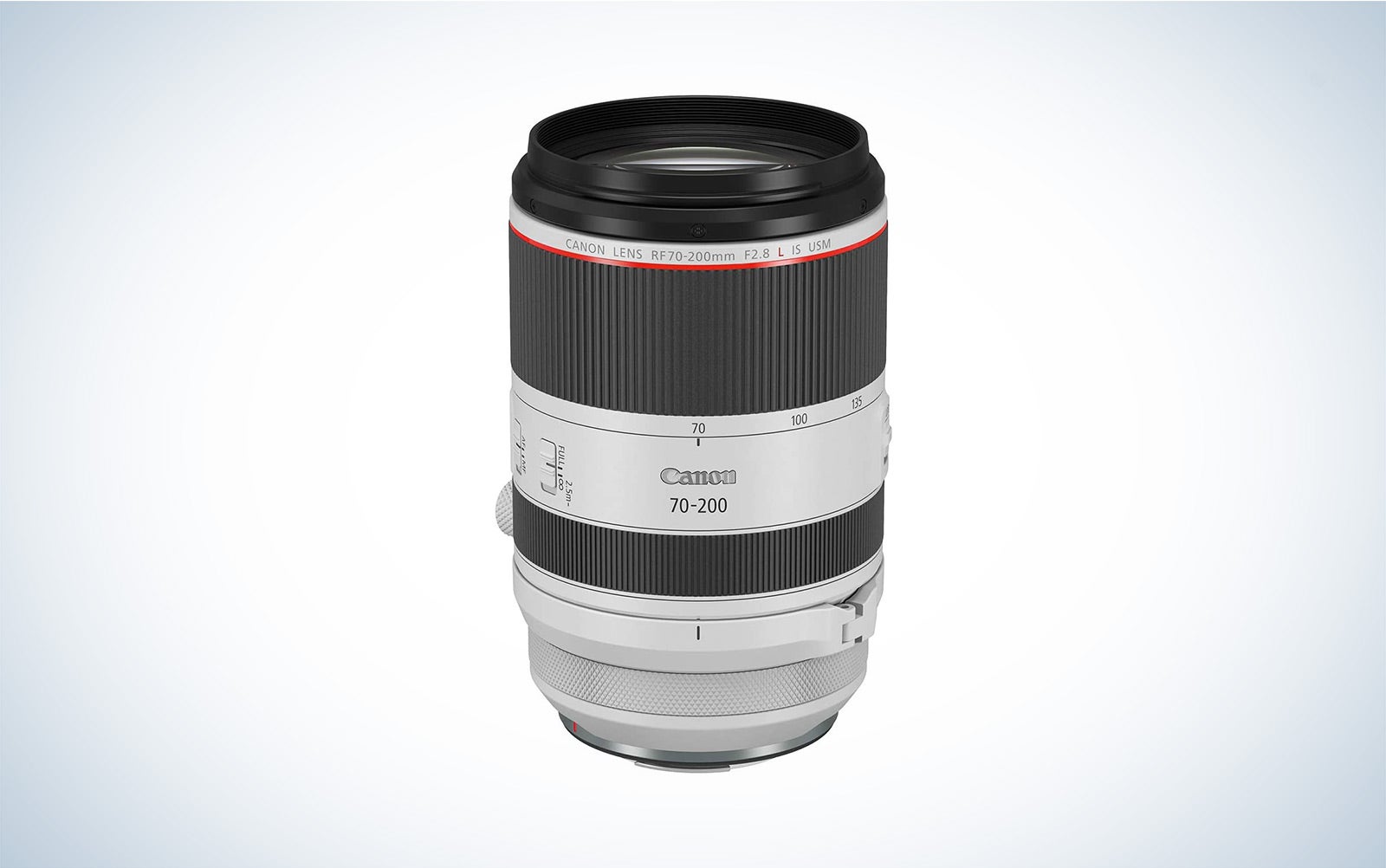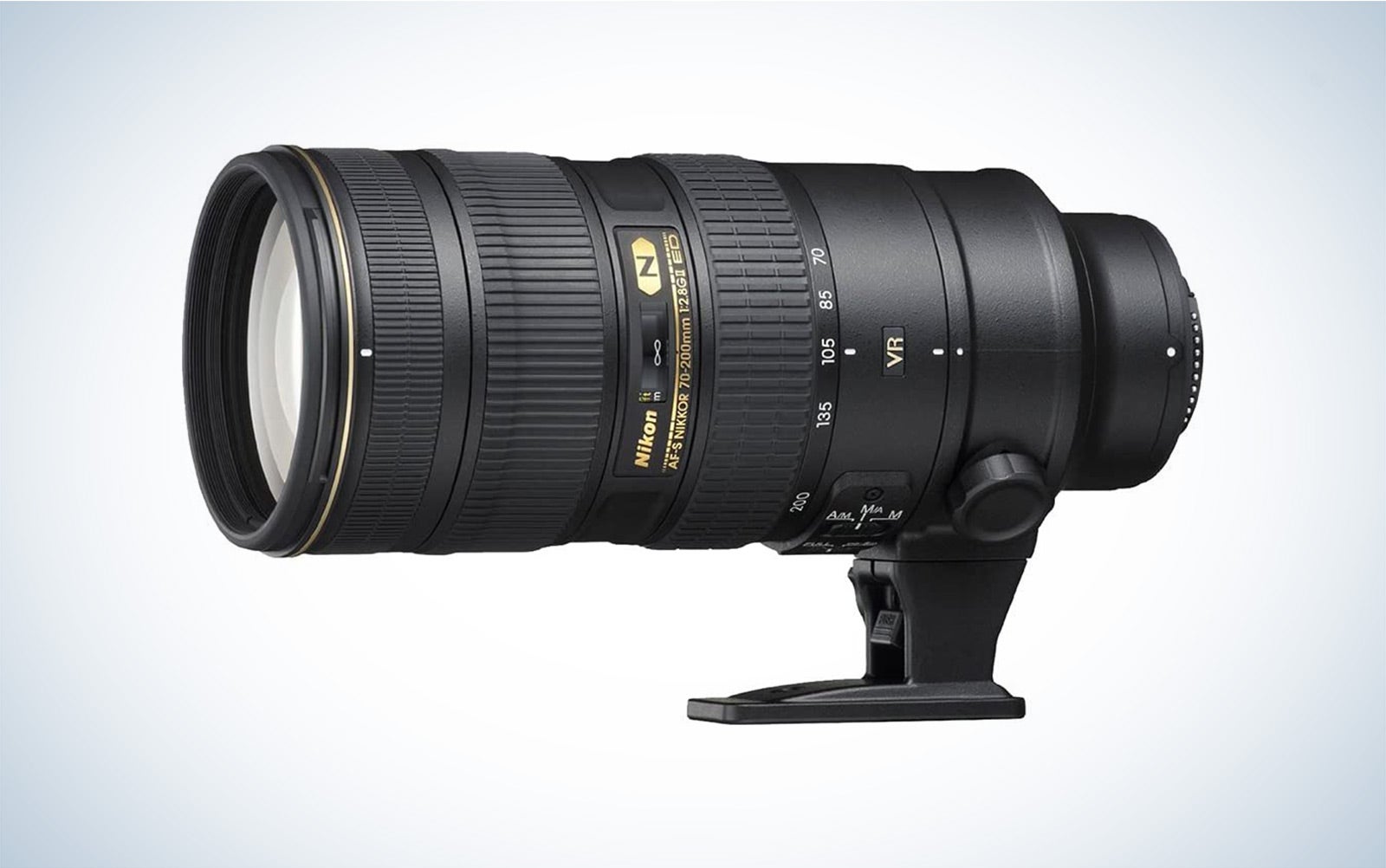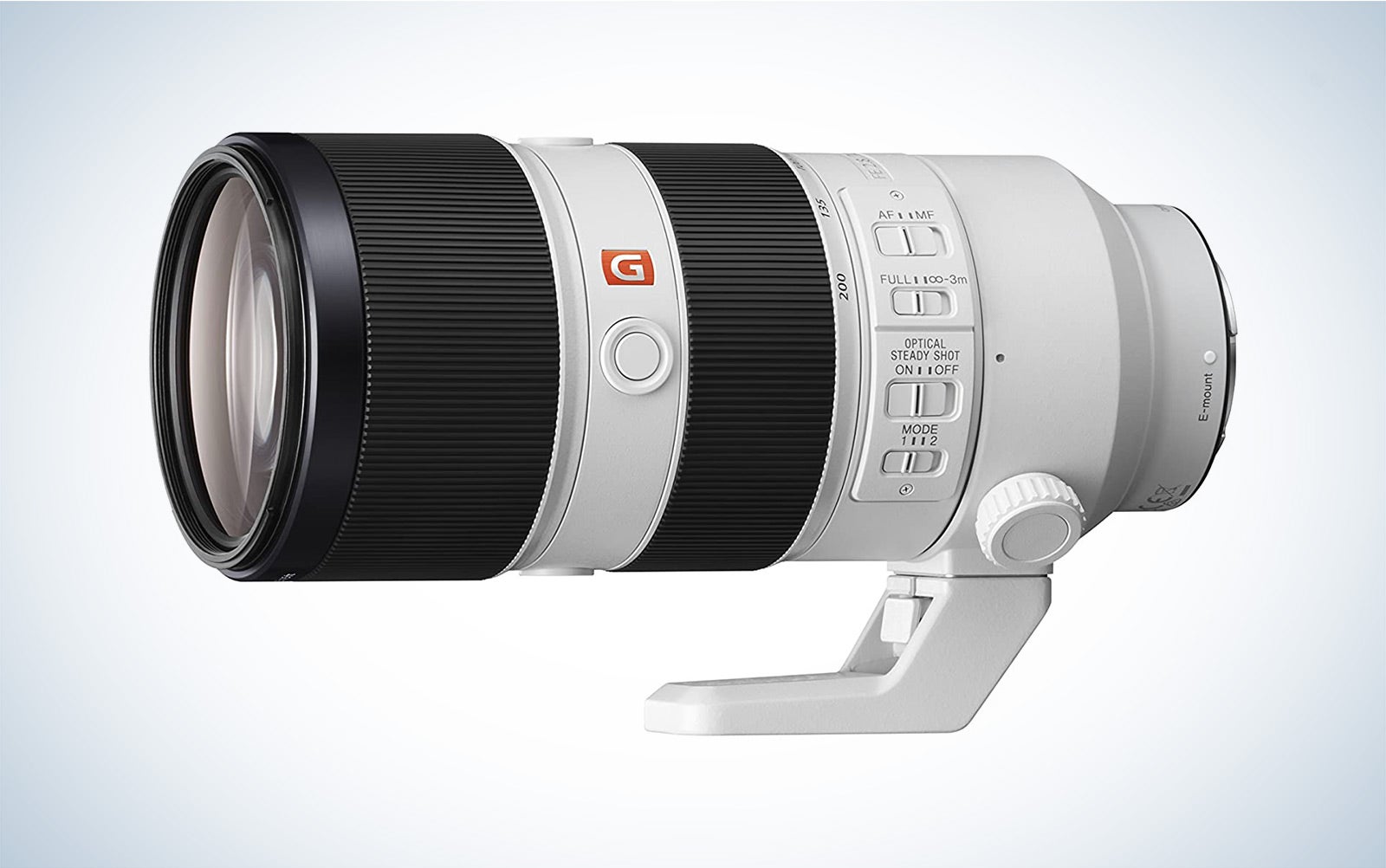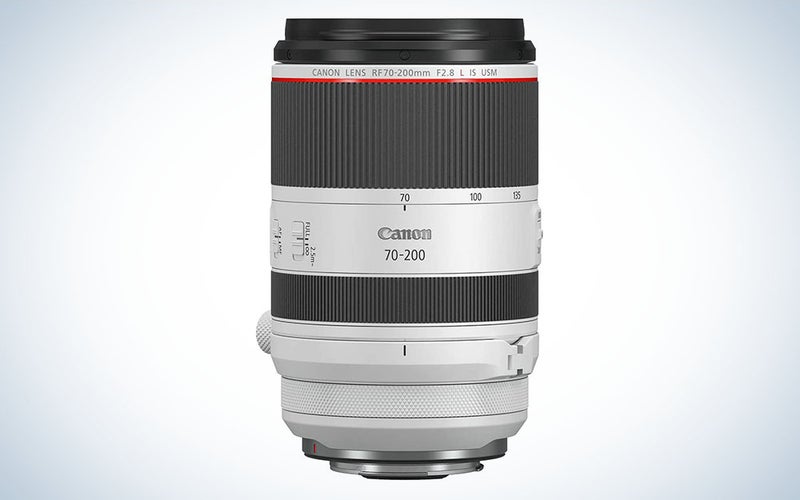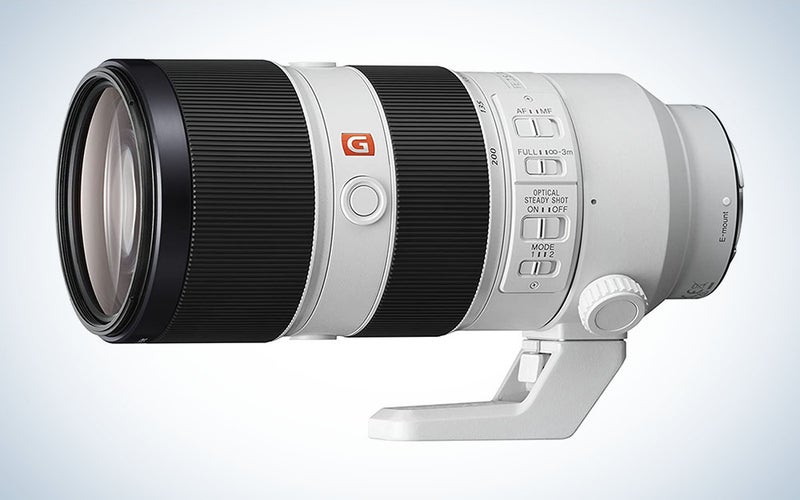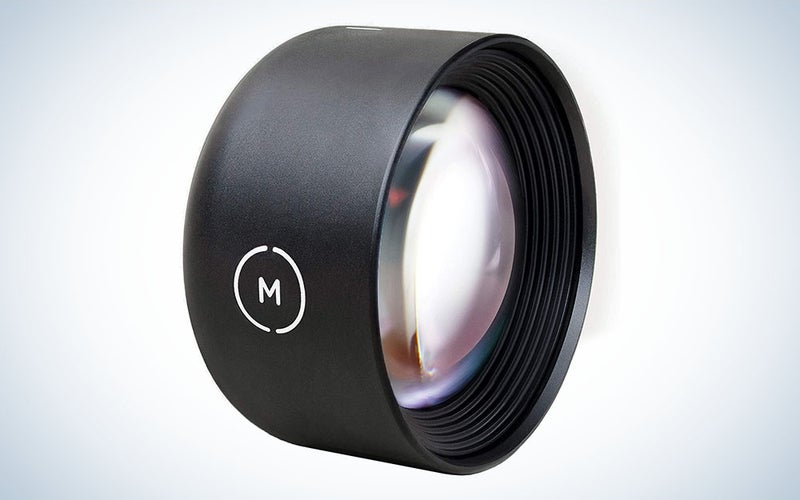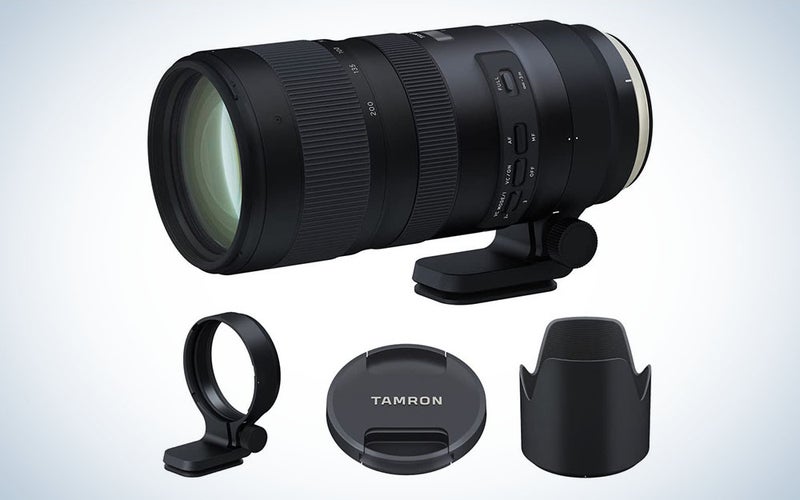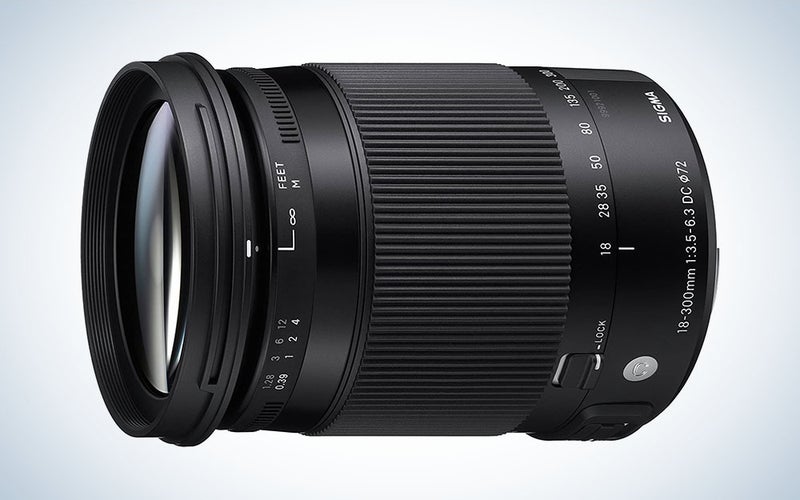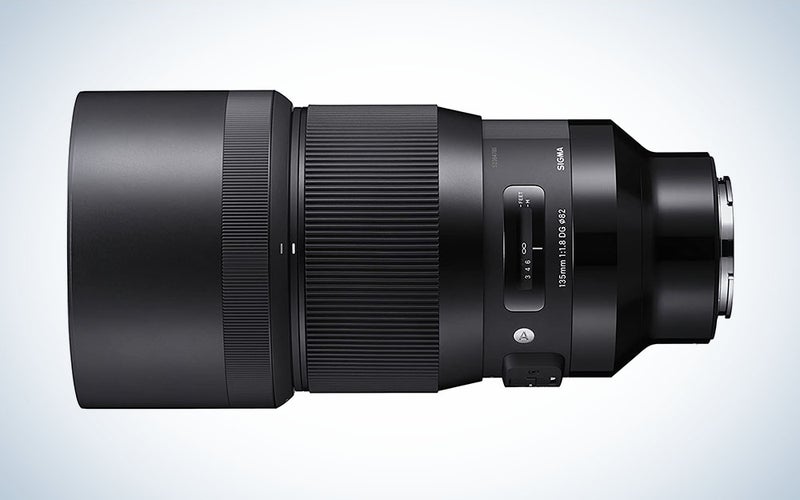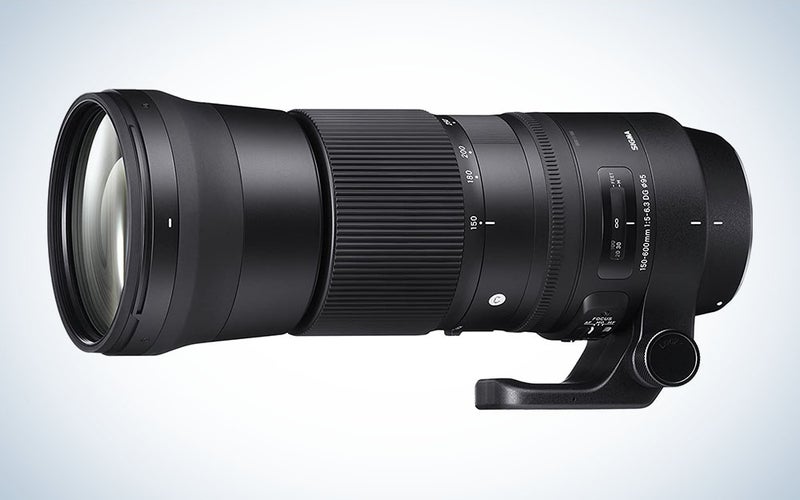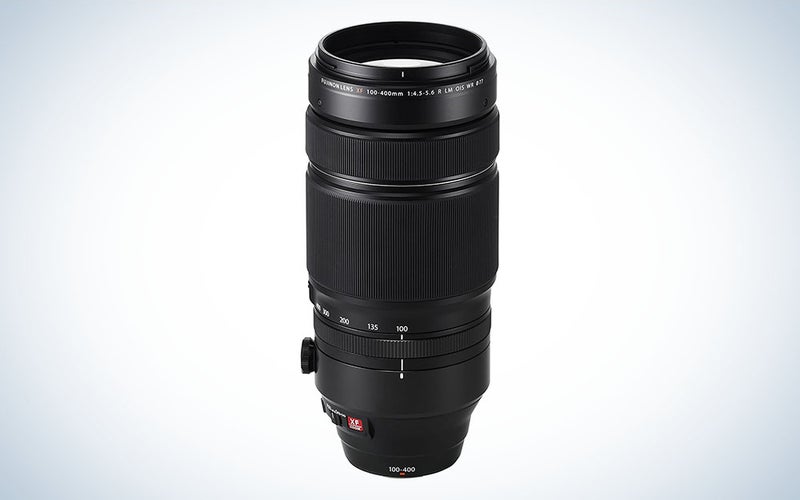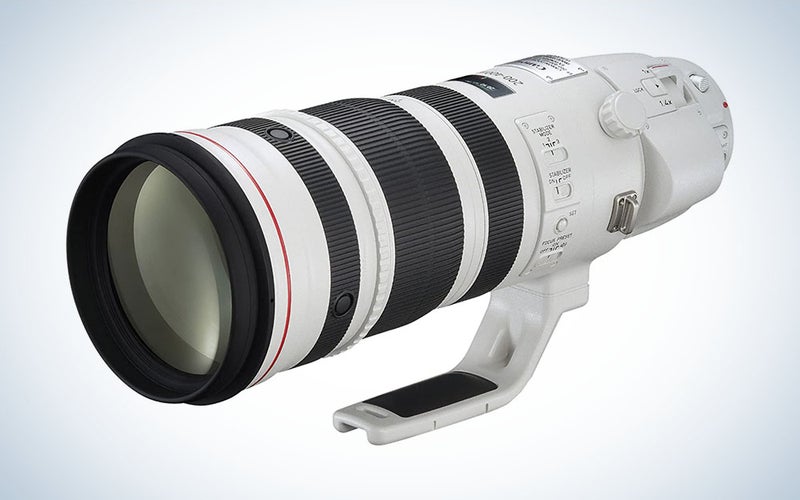We may earn revenue from the products available on this page and participate in affiliate programs. Learn more ›
A quality telephoto lens is typically one of the first speciality lenses that a photographer adds to their gear bag. A 70-200mm lens is considered a medium-tele length and proves useful for many photographers for its versatility. It can shoot everything from portraits to wildlife and sports.
Technically speaking, a telephoto lens is any lens that has a physical length that’s shorter than its focal length. In common language, however, photographers typically refer to anything with a focal length over 75mm in telephoto territory.
A long lens captures a very narrow field of view, which gives the camera a close-up look at far-away objects. Telephoto lenses can be zoom lenses, but a zoom lens isn’t necessarily a telephoto lens. Super telephoto lenses are anything over 300mm, and once you hit this range it’s more likely that a telephoto lens will be a prime lens, meaning that it only has one focal length. Telephoto camera lenses over 300mm are typically used by sports photographers and wildlife shooters.
- Best for Canon Mirrorless Cameras: Canon RF 70-200mm F2.8 L IS USM Lens
- Best for Nikon DSLR Cameras: Nikon 70-200mm f/2.8G ED VR II AF-S Nikkor Zoom Lens
- Best for Sony Cameras: Sony FE 70-200mm f/2.8 GM OSS Lens
- Best for Smartphones: Moment Tele Lens – 58mm
- Best Under $1000: Tamron SP 70-200mm F/2.8 Di VC USD G2 Lens
- Best All-in-One: Sigma 18-300mm f/3.5-6.3 Contemporary DC Macro OS HSM
- Best Prime Lens for Portraits: Sigma 135mm F1.8 Art DG HSM
- Best Enthusiast Super-Telephoto Zoom: Sigma 150-600mm f/5-6.3 Contemporary OS
- Best for Fujifilm Shooters: Fujifilm XF100-400mmF4.5-5.6 R LM OIS WR
- Best For Sports: Canon EF 200-400mm f/4L IS USM Extender 1.4x
What telephoto length is right for me?
A 70-200mm telephoto lens is an extremely versatile lens that is a favorite of photojournalists, wedding photographers, concert photographers, and sports photographers. You can even use it as a flattering portrait lens. Because it lets you decide how far away you want to stand from your subject, you can have total control over the amount of perspective distortion that appears in the photo.
A telephoto lens allows the photographer to put more distance between themselves and the subject of their photograph, which is helpful when you can’t get up close to what you are shooting pictures of. Running on stage during a concert, onto the field during a game, or crowding a bride and groom during a wedding ceremony to get the shot would be a big photography faux pas. Photographers in these situations need to capture the moment, without interfering. A long telephoto lens helps them do just that.
In some cases, photographers may find themselves needing to put even more space between themselves and their subject. It’s not unusual to see photographers on the sidelines of professional sports games with super telephoto lenses of 300-500mm long. Super telephoto lenses like these are also a favorite of wildlife photographers. If you love photographing wild animals it’s extremely important to put a lot of distance between yourself and those animals. Lenses this long, however, are typically very big and extremely pricy if you want a fast aperture.
Zoom lenses with huge zoom ranges can be appealing because they promise everything from wide-angle coverage to super-telephoto performance. It’s worth noting, however, that those lenses typically introduce a lot of distortion and vignetting at the wider angle focal lengths and only offer very slow apertures when you’re zoomed in. Unfortunately, there’s no magic lens that’s great for everything. At least not yet.
Things to consider when purchasing a telephoto lens for your camera
Selecting the right telephoto lens has a lot to do with what you plan to shoot with it, your camera brand and your budget. A telephoto lens is an investment lens and the price tag reflects that. Longer telephoto lenses will be more expensive than a medium-length telephoto lens. Generally speaking a telephoto lens is going to be over $1000 dollars because there are so many glass elements inside the lens.
Look for lenses that have some amount of built in stabilization. Camera shake is always something to look out for when photographing, but camera movements caused by vibration will be a lot more noticeable when you are shooting with long telephoto lenses. Shooting at high shutter speeds can help reduce camera shake, but that’s not always possible, especially if you’re using a budget telephoto that only offers a slow maximum aperture.. If your lens doesn’t have any built in vibration reduction you will definitely want to use a tripod to help stabilize the lens. Super-telephoto lenses tend to be extremely heavy and having it on a tripod will also help save your shoulders from all that weight.
If you’re shopping on the very high-end, you can look for extra features like buttons to lock the focus or more advanced image stabilization modes that you can adjust depending on the subject you’re shooting.
Best telephoto lenses: Reviews & recommendations
Best for Canon Mirrorless Cameras: Canon RF 70-200mm F2.8 L IS USM Lens
Canon
One of the big selling points of going mirrorless is the ability to make traditionally big lenses much smaller. This telephoto lens is designed for Canon’s mirrorless cameras and only weighs 2.36 lbs and is 5.75 inches long when it’s focused at 70mm. It has a bright f/2.8 aperture, optical image stabilization up to 5 stops, and high-speed quiet autofocus. Its minimum focusing distance is 2.3 ft. If you are a mirrorless Canon shooter this is the 70-200mm telephoto lens for you.
Best for Nikon DSLR Cameras: Nikon 70-200mm f/2.8G ED VR II AF-S Nikkor Zoom Lens
Nikon
The Nikon 70-200mm f/2.8G features vibration reduction image stabilization up to 4 stops, ED glass and a Nano Crystal coat to prevent smudges on the front element. The constant 2.8 aperture makes it great for shooting low-light during sporting matches or fancy events. If you are using the lens with a DX camera body it becomes a 105-300mm lens. It has a close focusing distance of 4.6 feet.
Best for Sony Cameras: Sony FE 70-200mm f/2.8 GM OSS Lens
Sony
Sony’s line of G Master lenses are some of the best on the market and the 70-200mm lens for Sony cameras is a thing of beauty. The lens has an 11-blade circular aperture for smooth bokeh and minimal focus breathing, which makes it a great option for shooting video too. It’s made up of ED and Super ED glass elements to minimize chromatic aberration and fringing and has a Nano AR coating for increased resolution that suppresses flare and ghosting. The dual floating focus system gives it speedy, precise autofocus, plus its dust and moisture-resistant so you don’t have to worry about getting the shot even if the weather turns.
Best for Smartphones: Moment Tele Lens – 58mm
Moment
If you’ve ever zoomed way in when shooting with your smartphone you are well aware of how quickly the quality falls off. This 58mm tele lens for your smartphone will bring you 4x closer to your subject if you are shooting on a dual lens smartphone—the equivalent of 116mm. Moment lenses are made of high-quality glass for edge-to-edge sharpness and are compatible with iPhone, Android, tablets, and even laptop webcams. Get closer to your subjects when shooting with your smartphone without having to sacrifice image quality.
Best Under $1000: Tamron SP 70-200mm F/2.8 Di VC USD G2 Lens
Tamron
Telephoto lenses are typically so expensive because there are so many glass elements inside helping keep the lens stable, reduce chromatic aberrations and give you beautiful bokeh. This Tamron 70-200mm lens still features vibration control up to 5 stops, has fast autofocus and an eBand Coating to eliminate ghosting and flare. But since it’s a little bit older and is made by a third-party manufacturer, it will save you some cash. If you are planning to go with a third-party lens make sure to check that it will be compatible with your camera body.
Best All-in-One: Sigma 18-300mm f/3.5-6.3 Contemporary DC Macro OS HSM
Sigma
This massive zoom range will cover everything from sweeping landscapes to fast sports action on the far side of the field. It’s just over four inches long at its shortest and only weighs just over a pound, so it’s compact enough to stay on your camera at all times. The f/6.3 maximum aperture at 300mm isn’t the fastest, but the built-in OS system will keep things steady while you’re shooting.
Best Prime Lens for Portraits: Sigma 135mm F1.8 Art DG HSM
Sigma
Sigma’s prime lens doesn’t zoom, but it does offer a maximum aperture of f/1.8, which is extremely wide for this focal length. As a result, it can create an almost dream-like image with buttery smooth bokeh in the background. It also uses Sigma’s high-end coatings to fight flare and its advanced glass elements to correct for distortion.
Best Enthusiast Super-Telephoto Zoom: Sigma 150-600mm f/5-6.3 Contemporary OS
Sigma
This four-pound Sigma lens is going to want a tripod when you’re out shooting, but it’s hard to beat the value it offers. For less than $1,000, it promises high-end coatings and sturdy construction, as well as a robust image stabilization system for when you’re shooting handheld. Its 600mm reach is true super-telephoto territory, so even at f/6.3 (which sounds slow) you’ll get blurry backgrounds and nice subject separation. Take it all the way down to 150mm and you can even use it for portraits if you want.
Best for Fujifilm Shooters: Fujifilm XF100-400mmF4.5-5.6 R LM OIS WR
Fujifilm
This four-pounder camera lens makes most Fujifilm mirrorless cameras look small, but it produces extremely crisp and vibrant images across its entire focal range. It’s fully weather-sealed, so it’s ready for any environment, and the built-in OIS offers five stops of stabilization when shooting handheld. On a crop sensor, it gives the equivalent field of view of a 150-600mm lens, which actually makes its maximum apertures seem even more impressive.
Best For Sports: Canon EF 200-400mm f/4L IS USM Extender 1.4x
Canon
When pro sports photographers show up to the Olympics, they often choose this Canon telephoto lens for lots of their coverage. The 200-400mm range and fast f/4 maximum aperture are all excellent for shooting fast action. However, this lens also has a 1.4x extender built right in so photographers can quickly enable it and get even more reach out of the lens. It has Canon’s most advanced optical stabilization and highest quality glass and coatings. It’s truly a thing of beauty.
FAQs
Q: Why are telephoto lenses so expensive?
Telephoto lenses are typically expensive lenses because they are made up of so many elements and have a more complicated construction than lenses that have shorter focal lengths. A standard telephoto lens has elements inside that are reducing chromatic aberrations, reducing vibration to avoid camera shake and cutting down on ghosting and flare. Expect to pay more for long lenses with fast, constant apertures.
Q: How do I choose a telephoto lens?
Choosing the right telephoto lens for you comes down to what you are shooting, what camera brand you use, and your budget. Longer telephoto lenses over 300mm will typically be more expensive than lenses that fall in the 70-200mm range. A wildlife photographer or a sports photographer will probably get more use out of a 300mm lens than someone who is planning to use the lens for photographing live music or weddings. Make sure that the telephoto lens that you purchase will be compatible with your camera body, this is especially important when shopping for third-party lenses.
Q: What is the difference between a telephoto and zoom lens?
These words are often falsely used interchangeably and can be confusing if you are just getting started with photography. A telephoto lens typically refers to something with a narrow field of view and a focal length over 70mm, while a zoom lens is any lens that allows you to change the focal length of the lens. Many telephoto lenses are zoom lenses, but not all zoom lenses are telephoto lenses.
Final thoughts on buying the best telephoto lenses
If you are in the market for a telephoto lens be prepared to spend a little more than you would on other lenses. Long lenses with fast apertures have a more complicated construction than a “nifty fifty” lens and that is reflected in the price. A quality telephoto lens is an excellent addition to your lens kit though, and will last a long time. Consider your telephoto lens as an investment into your craft.
